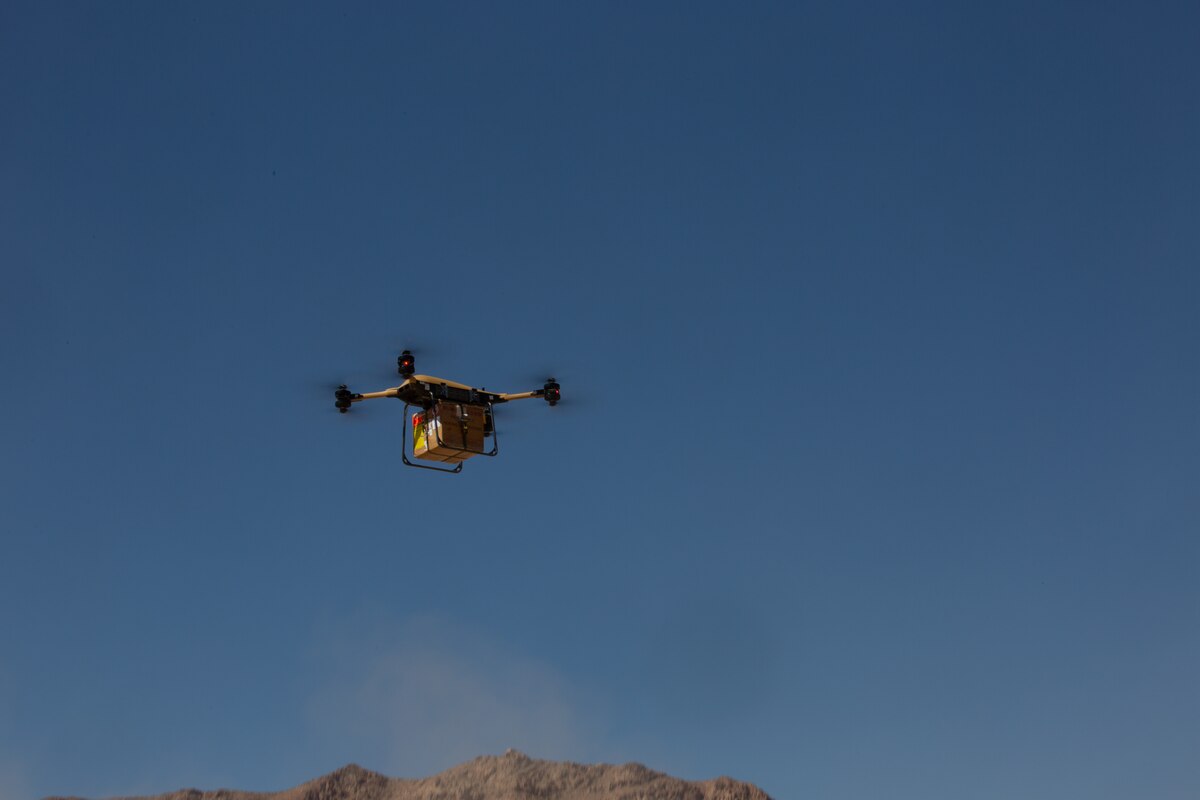Moving lifesaving blood products across the Middle East is no easy task, and the U.S. Central Command’s Theater Joint Blood Program manages it all. USCENTCOM’s area of responsibility (AOR) has two main hubs for storing blood products including whole blood, red blood cells, platelets, and plasma. Each product has a separate shelf life and the dynamic logistics for transporting these products call for innovation. Two crucial components of this operation are the Blood Transshipment Center (BTC) and the U.S. Army 165th Quartermaster Brigade Aerial Delivery Company-Airborne Det 1 located at Al Udeid Air Base, Qatar. The BTC acts as the largest deployed blood product distribution hub in the USCENTCOM AOR while the 165th Quartermaster BADC-A Det 1 expertly rigs the blood products for aerial delivery. The BTC uses a variety of methods such as dry ice and insulated packaging to ensure the blood products are maintained at the appropriate temperature so they arrive at their destination safely. After the products are set to ship, the U.S. Army riggers get to work, packaging them in a way to be dropped by aircraft or even unmanned aerial vehicles (UAV).
“All the blood that comes from the United States is being moved by the Blood Transshipment Center to all the sites in the AOR. We work closely with Air Mobility Division, Special Operations Command Central, U.S. Air Force rescue assets, and the U.S. Army riggers to make sure blood gets to all our warfighters. Working with the Army riggers is a special process due to the fact that with their help we are able to supply the most austere locations via air drop. It has been tested and proven that this process does not affect the validity of products and are still viable for transfusion for our warfighters and joint coalition members,” said U.S. Air Force 1st Lt. Max Galang, 379th Expeditionary Medical Group BTC officer in charge.
“Dropping Blood into the CENTCOM AOR is the biggest and most tracked commodity that we send to the end user,” said Sgt. 1st Class Dekota Luhrman, 165th Quartermaster BADC-A Det 1 operations noncommissioned officer. “When we see the reports that it is actually being used to save lives and it brings a sense of accomplishment to the aerial delivery capability.”

“The Joint Blood Program Office (JPBO) is a 24/7 operation, accountable for 18,000 blood products per year, working with partners across all service components to ensure the AOR has the correct blood supply available for our U.S. and coalition warfighters. Blood movement in the AOR is a week-to-week obstacle course that challenges our team to navigate multiple variables, so that our medical forces have an uninterrupted supply of non-expired blood products. Battlefield transfusions occur as far forward as the point of injury, during active kinetic engagements, near or at the front lines of combat,” said U.S. Air Force Maj. Ryan Comes, JBPO director.
“In the current operational picture, blood is the highest priority item and currently the driving force for all airdropped commodities,” said 1st Lt. Dakota A. VanBrocklin, 165th Quartermaster BADC-A DET 1 commander. “Soldiers from the 165th Quartermaster and the U.S. Army rigger community as a whole displays unmatched pride in their craft and shoulders an immense amount of responsibility in the aerial delivery mission, especially when it comes to supporting medical professionals with lifesaving interventions, such as blood products.”
From a blood resupply standpoint, USCENTCOM have to leverage capabilities like UAVs to get blood to medics on the ground, which mitigates risk when under fire and allows them to begin transfusions faster to wounded troops and increase probability of survival. Partnership between the two services is pivotal in distributing these products throughout the Middle East, and the Army is passionate about the mission. Through the multi-service coordinated effort, the 379th Air Expeditionary Wing and partner wings across the AOR are able to deliver 500 blood products on a weekly basis, rotating out products before they meet their expiration dates. When it’s time for the products to be delivered, USCENTCOM uses various methods of delivery depending on the environment. Innovation is key to adapting to the environment, and as such, the TJBP has tested unique ways to transport blood. No matter the method, the blood delivery operation is critical to ensure national security by supporting troops on the ground in the vast AOR.
















